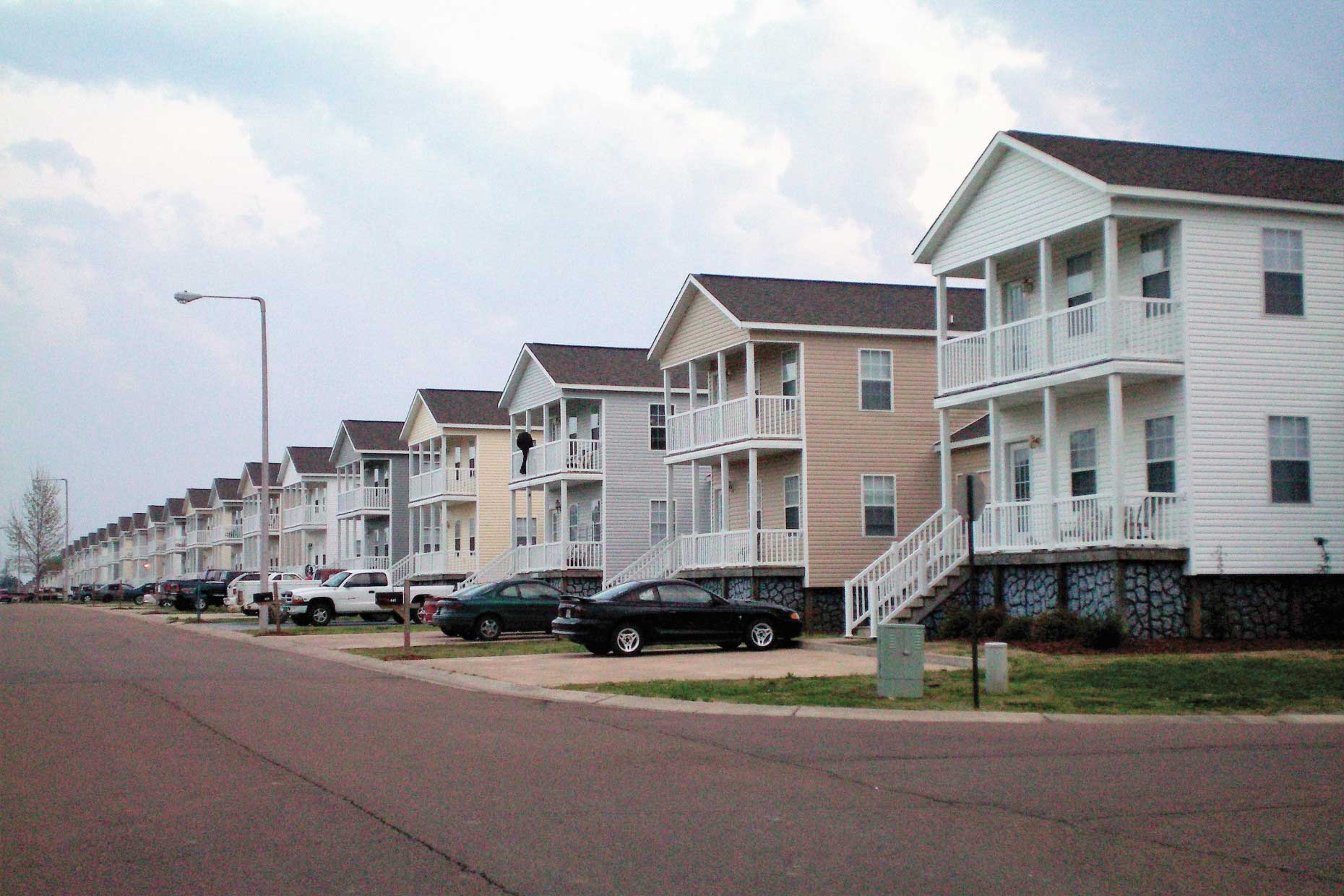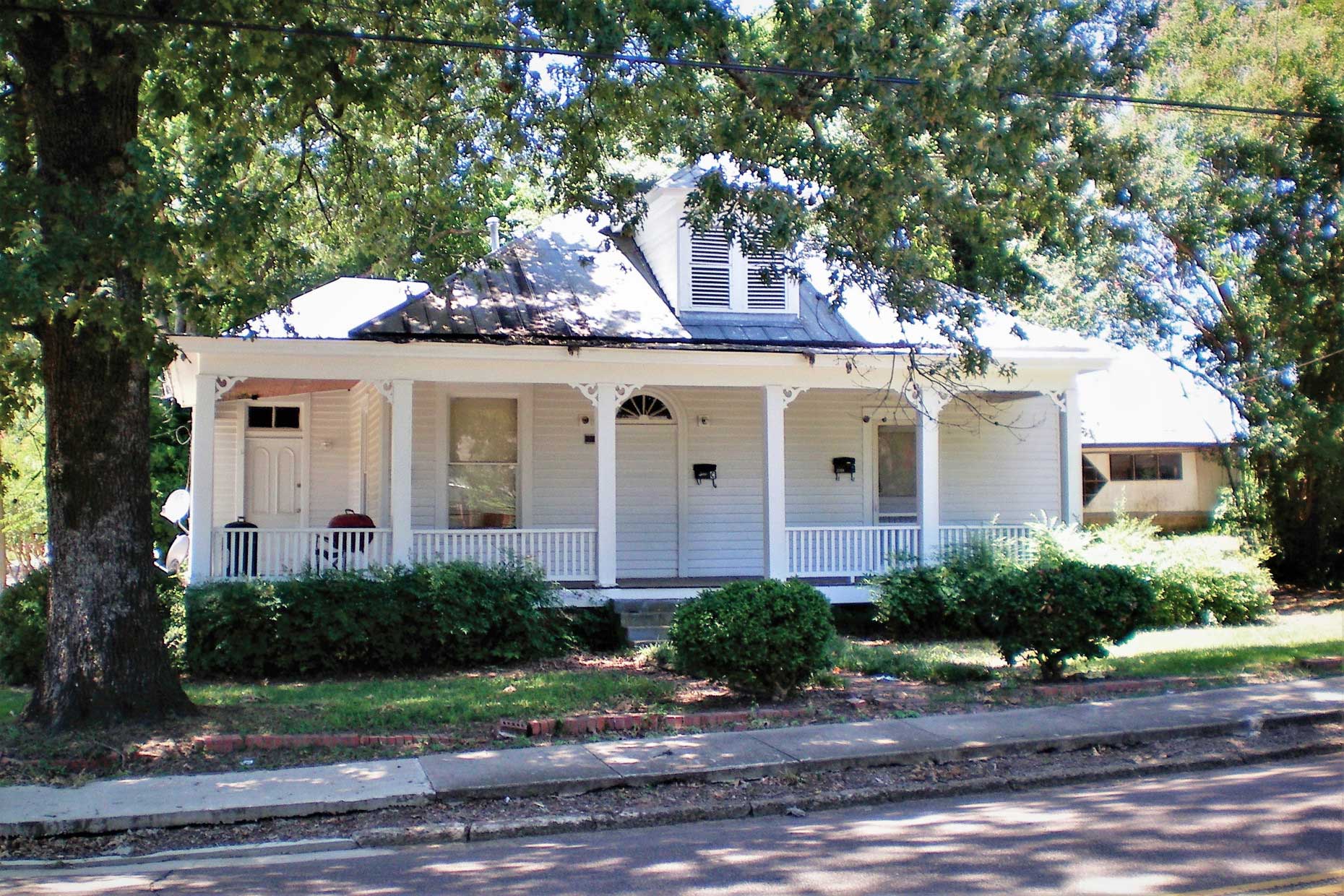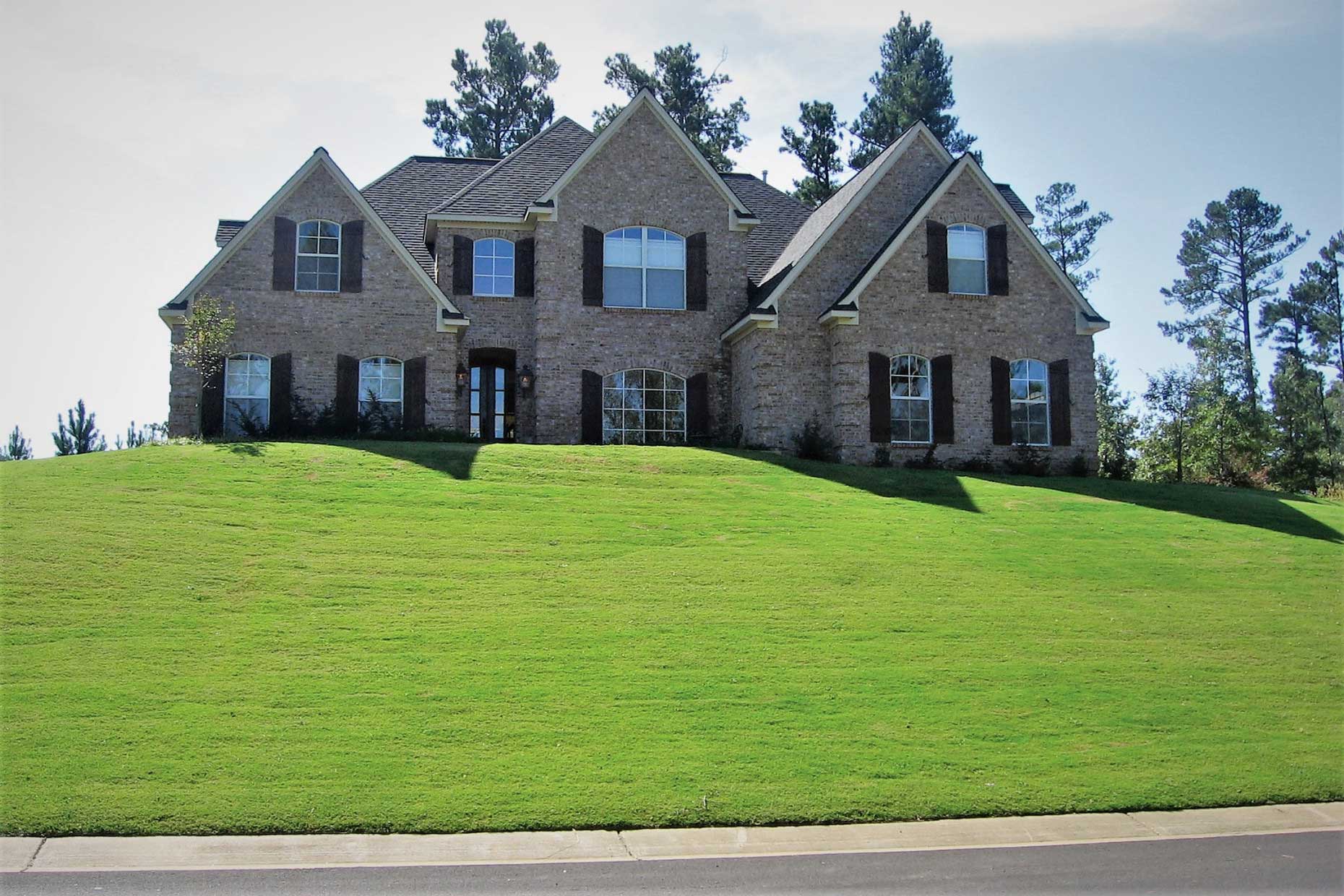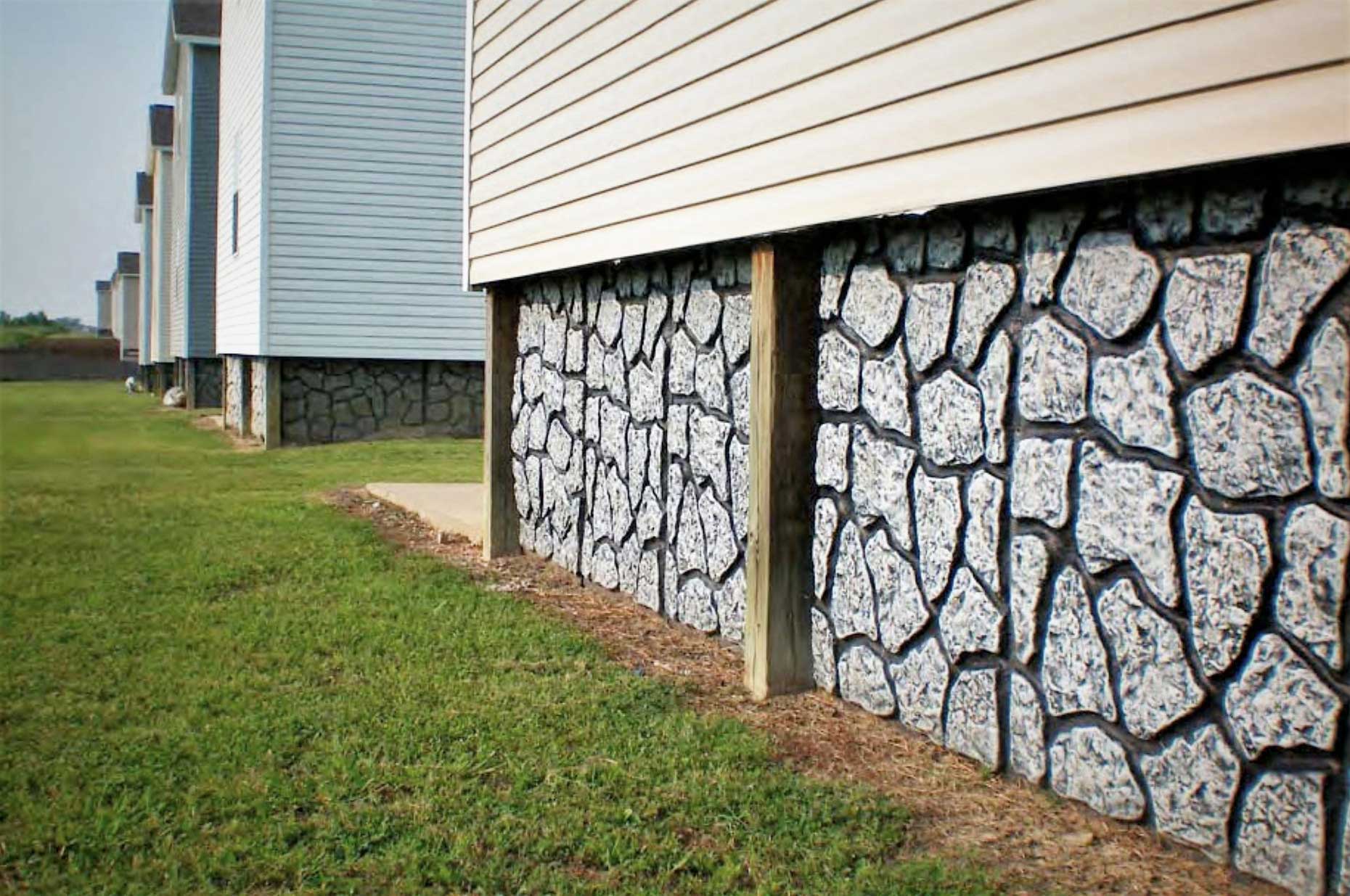Along with the Gulf Coast Community Design Studio and the GreenMobile Project, the Carl Small Town Center (CSTC) received funding from the United States Department of Energy to examine affordable and energy efficient housing in the State of Mississippi. The CSTC focused on the issue of suburbanization, as part of our mission to promote good design and planning for small towns and give them the tools necessary to preserve the hearts of their community: their downtowns and historic neighborhoods. From our experience working throughout the entire state since 1979, Mississippians care immensely about their small towns, about their community, their land and their ways of life. It is our goal to raise awareness of the impact that suburban sprawl has on these deeply felt institutions and the built and natural environment.
Design professionals, academics, and much of the general public are familiar with the recent history of suburbia in the United States. Developments such as Levittown and recent responses such as new urbanism loom large, both in the landscape and the popular press. We experience frustration when driving down roads passing by what was once a forest or farm transformed into continuous rows of identical vinyl-sided houses. There is no denying that parts of the United States have been transformed into suburban sprawl, and countless planners, architects, and historians have documented it, publicized it, and critiqued it over the past several decades.

However, some places have been largely left out of the process of suburbanization, creating a particular opportunity to alter their pattern of residential development. Mississippi, a state with about 3 million people, is composed primarily of small towns, surrounded by expanses of rural areas and agricultural land. These small towns typically consist of a courthouse square or main street, surrounded by a few blocks of one and two story commercial buildings. Although these downtowns suffered decline in many cities over the past fifty years, they remain the heart of the community. Bolstered by a concentration of civic functions and accompanying services (law offices, accountants etc.), as well as some remaining retail, these downtowns and the surrounding residential neighborhoods are still viable and physically intact.
Unfortunately, the protections that time and circumstance afforded these neighborhoods are rapidly eroding. Economic development, the expansion of the intra-state highway system, white flight, and countless other factors have brought suburbanization to the state of Mississippi. Two trends towards suburbanization have emerged within the state. In larger metropolitan areas, such as Jackson and Memphis, people are moving from the center of one city to suburban areas or small towns on the outskirts of the metropolitan area. Cities on the edges of the Jackson metro area such as Clinton (49% population growth from 1980 to 2000) and Ridgeland (269% in the same period) have seen explosive growth, while cities in the Memphis metropolitan area, such as Olive Branch grew tenfold in the same period. Within smaller towns, such as Starkville and Columbus, people are moving further and further from the traditional center of the city, to the edges or the county. The City of Meridian, once the largest city in Mississippi, now has 38,000 people, while the surrounding area of Lauderdale County has grown to 77,000.
Perhaps more arresting than demographic statistics is the physical evidence of this growth and change in development pattern throughout the state. Farmland and natural resources has been replaced by suburban development, while once beautiful homes in the center of town sit abandoned and neglected. The central downtown core has remained intact, its historic houses and neighborhoods remaining some of the highest priced and most coveted homes in many small towns. These older homes are built to respond to the climate of Mississippi and southern cultural conventions. Large front porches provide opportunities for socializing with neighbors. Central atrium spaces and dormers allow for cross ventilation and hot air to flow up and out of the house, while large overhangs and ample vegetation provide solar shading in the hot summer months. Quality construction and the use of local materials insured that these homes last and provide opportunities for cost-of-energy savings. The downtown streetscape features sidewalks, pathways from the sidewalk directly to the front door, and roadways that connect directly to each other and neighborhood amenities, such as schools and the downtown. The visual of someone sitting on a large front porch in a rocking chair, sipping an iced tea to escape the heat and gossiping with neighbors is a distinctly Southern image, one that would not be possible without these historic homes and neighborhoods as the backdrop.

As you move farther from downtown and historic neighborhoods, new residential construction tends to drift from contextualized developments to the prototypical McMansion. Growing neighborhoods on the edges of town lack any distinctively southern architectural details, sidewalks or connectivity to the rest of town. Tall brick walls separate these developments from street life and traffic clogs collector roads during rush hour, as they are the only road that connects these subdivisions to the rest of town. This area of town is highly coveted and growing in population. These homes feature expensive heating and cooling systems, lack front porches and overhangs, and are built on sites denuded of all vegetation. Streets lack sidewalks and front paths connecting the driveway to the front door, further privatizing the house and yard from any street life. Construction materials are chosen for aesthetics and are shipped across the nation, consuming energy. These houses make little use of local resources and local architectural styles. These subdivisions lack any connection to the existing town and primarily feature a cul-de-sac and dead-end layout with curving streets.

These homes are available at low prices and do offer many modern conveniences, ample garage space and a piece of the American Dream to new and relocating residents of Starkville. However, as these houses and developments move further and further from the center of town or from the major metropolitan area, and these houses get larger and larger, they exacerbate a development pattern relatively new to the state of Mississippi: suburban sprawl. Irrelevantly named subdivisions (Maison de Ville in Starkville, Mississippi) replace neighborhoods as places of reference, and feature little connection to existing neighborhoods and their surroundings. Row upon row of similar houses fill the landscape, eating up once agricultural land and natural resources that characterize the rural state of Mississippi. Community character and a regional style are being obliterated, much as it has already been in much of the United States.

Mississippi’s progress may well come at a cost to the small town way of life and built form that residents cite as one of the main reasons they live here.
The literature on suburbia is extensive (Geography of Nowhere by James Howard Knustler and Suburban Nation: The Rise of Sprawl and the Decline of the American Dream by Andres Duany, Elizabeth Plater-Zyberk and Jeff Speck, just to name a few) and for the most part, consensus about its ills have been reached. Suburbanization has already taken place in the northeast United States and other areas of the country that have experienced fast population growth, shifts in economic base and experienced an expanded influence of the automobile on the built environment.
The planning and urban design community is now in a period of post-suburbia, developing new or amended patterns of development which work to negate the negative impacts of suburban sprawl on communities and the natural environment. Downtown revitalization movements and advocates of mixed-use draw attention back to the downtown and urban living. New urbanism offers a return to a bygone way of life with neo-traditional town and building design. New development includes new town centers, giving sprawling suburbs that have long ago obliterated, or never had a town center.
Yet solutions found elsewhere have done little to prevent the march of suburban sprawl in other parts of the country, places like Colorado Springs, Colorado and now parts of Mississippi continue to allow and embrace this type of development. One may wonder, how can this development pattern be persisting in Mississippi, given the critiques suburbia has already experienced in the rest of the country? How do we evaluate whether suburban sprawl is needed in Mississippi?